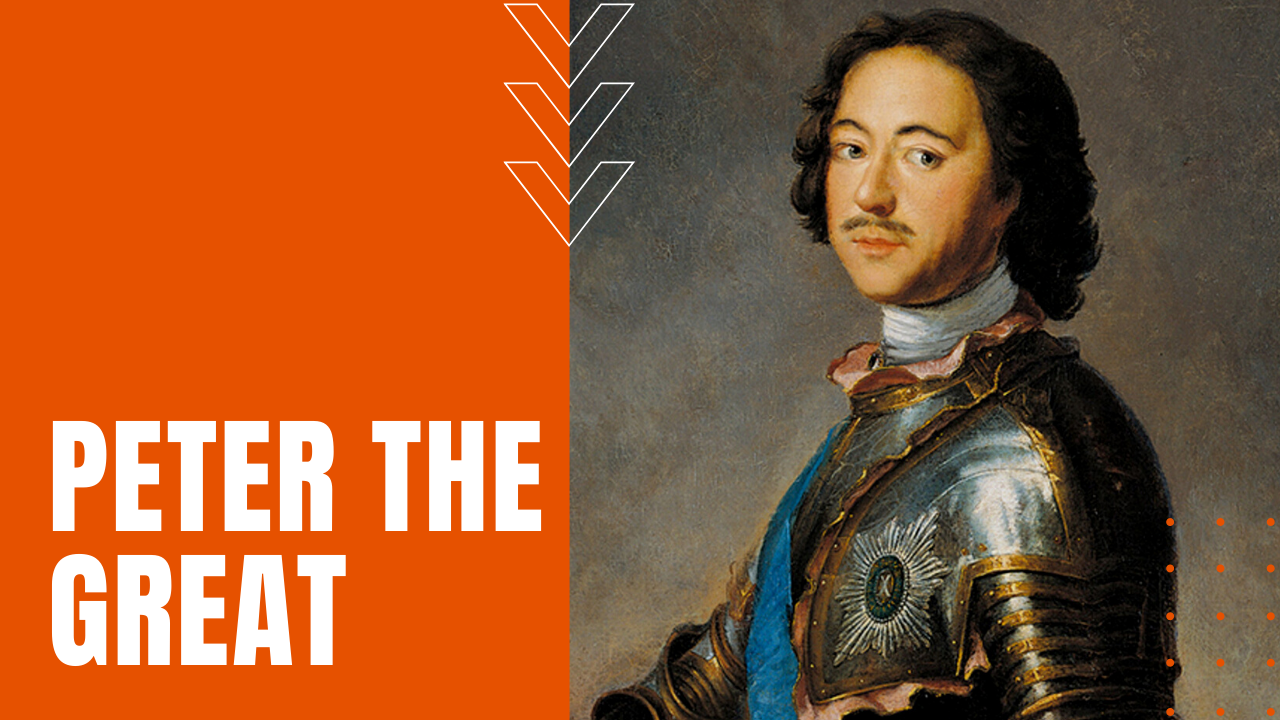Peter The Great: 43-Year Russian Reign and Restructuring

Who was Peter the Great?
Born in 1672 Moscow Russia, the 14th child of Czar Alexis, Peter the Great came to power at the age of ten, surviving multiple political intrigues and countless attempts to oust him from power. Known as the Grand Embassy, in 1697, Peter traveled incognito throughout Europe with a large Russian delegation, soon discovering that his landlocked and quite underdeveloped homeland paled by comparison to most European nations who had embraced the Age of Enlightenment.
Standing six feet eight inches tall—at a time when the average height of European adults was a mere five-and-a-half feet—Peter’s incognito status fooled no one, affording him great access to a wide range of movers and shakers of the day.
As a result of his 18-month Grand Embassy tour, Peter returned home with a stockpile of knowledge ranging from naval warfare, shipbuilding, bureaucratic organization, architecture and city-building techniques.
What Did Peter the Great Do?
Forced home to quell the rebellion of the Streltsy in 1698, Peter set out to modernize Russia based on European standards of the day, commanding his courtiers and officials to wear European clothing, while enacting a beard tax on Russian men who refused to shave their traditional facial hair.
Peter soon turned his attention to building a dominant Russian navy, seeking to acquire deepwater ports in the Baltic Sea long controlled by the Empire of Sweden. In 1703, after capturing the Ingermanland province from the Swedes, Peter began construction of Saint Petersburg on the shores of the Baltic Sea, forbidding the construction of any stone edifice outside the city in an effort to focus all stonemasons on the construction of his new capital.
Five years later in the Battle of Lesnaya, Peter at long last defeated forces led by King Charles the 12th of Sweden, forcing the once-dominant king to abandon his planned invasion of Moscow. Forced to give up his Black Sea ports after his defeat to the Ottoman Empire in the Russo-Turkish War of 1710, Peter’s northern armies took control of modern-day Latvia, Estonia and Finland, which further opened Russia’s access to maritime trade.
During his 43-year reign, Peter transformed his country’s medieval aristocracy, initiating European-style changes that affected all aspects of Russian life. He also transformed Russia into a formidable naval power, while reorganizing the Russian army along western standards. He focused a countrymen on scientific and technological advancements, while modernizing the Russian alphabet and switching the nation to the Julian calendar, at the same time abolishing Russia’s archaic form of government, which in turn led to transformative advances in commerce and industry.
Peter The Great Alcoholic
On the darker side, however, Peter also drank heavily on a regular basis and was known for his violent temper, which contributed to his death from uremia on February 8th, 1725, making Peter the Great a fallible yet important figure in the annals of Russian history.
